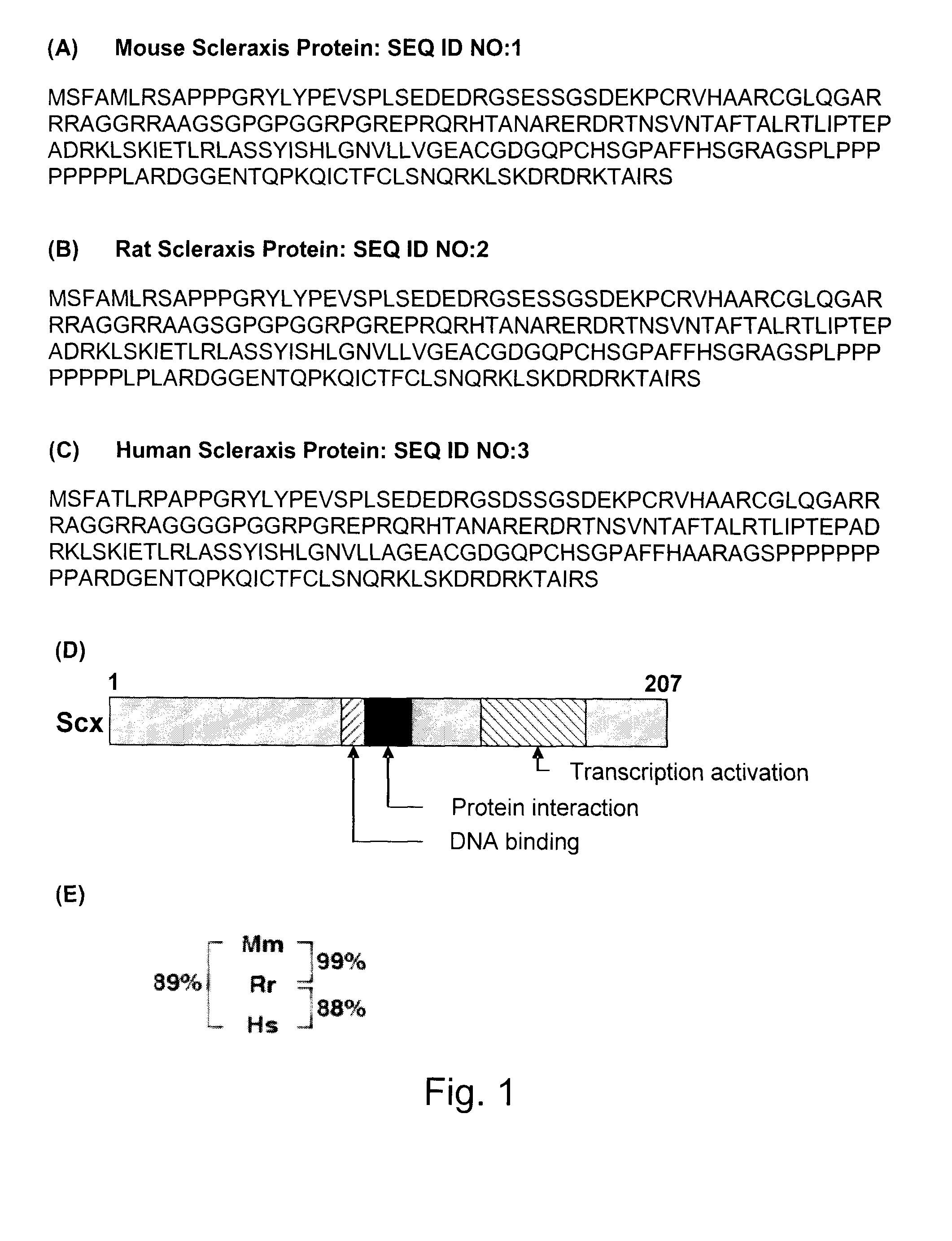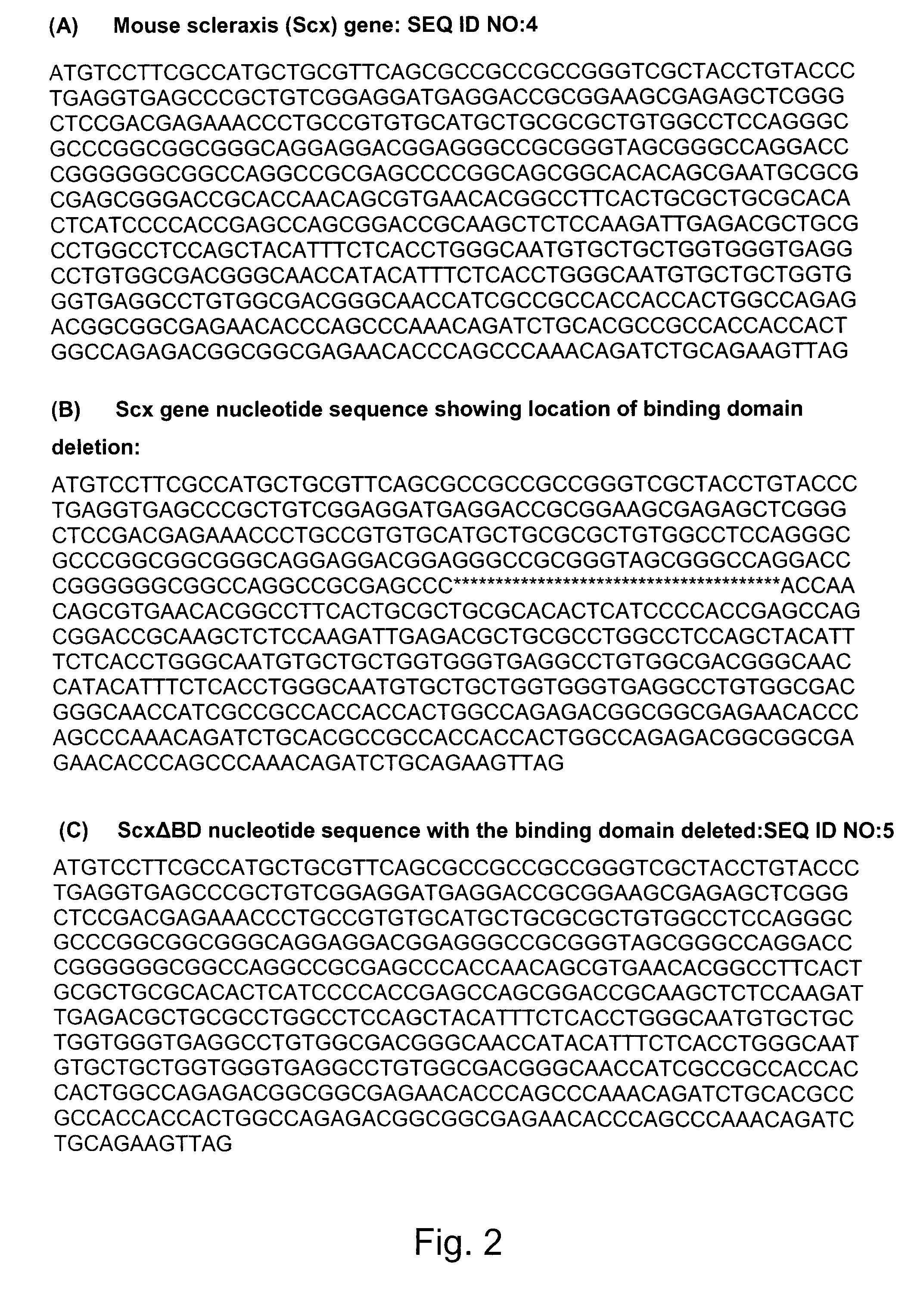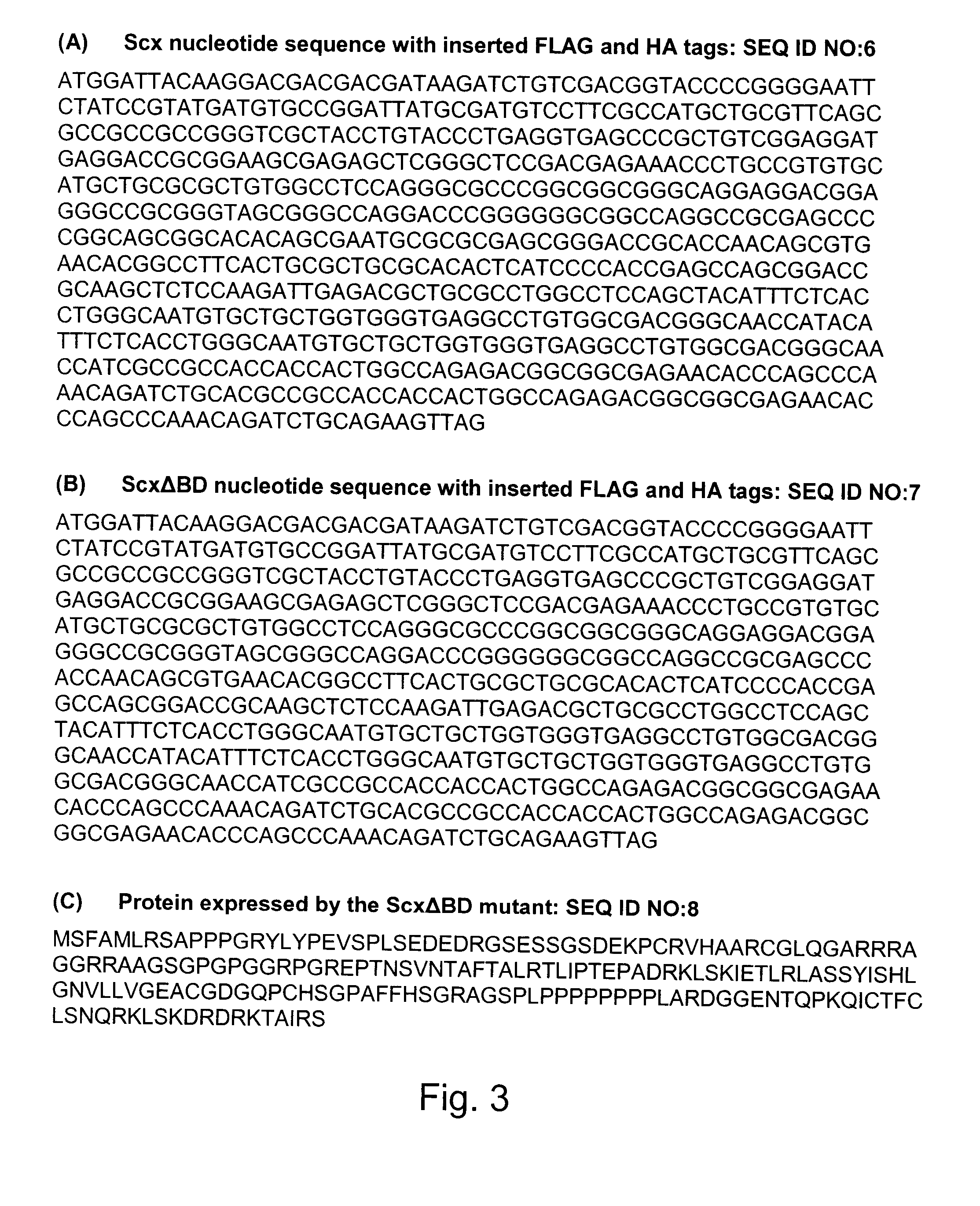Inhibition of collagen synthesis
- Summary
- Abstract
- Description
- Claims
- Application Information
AI Technical Summary
Benefits of technology
Problems solved by technology
Method used
Image
Examples
example 1
[0080]I have surprisingly found that increasingly stressing aortic vascular smooth muscle cells by serum deprivation resulted in increasing expression of scleraxis (FIG. 4). Samples of rabbit aortic vascular smooth muscle cells were subjected to serum deprivation (0% FBS) to induce collagen synthesis, or were treated with low concentrations (0.5% FBS) or high concentrations (5% FBS) for 72 hours. Total protein was isolated from each sample for immunoblotting. α-tubulin was used as the loading control (FIG. 4(A)). Cells maintained in 5% serum did not express detectable amounts of scleraxis (FIG. 4(B)). However, increasing levels of serum deprivation resulted in increasing levels of scleraxis expression (FIG. 4(B)).
[0081]I also surprisingly found that pro-fibrotic TGF-β factor induces scleraxis expression in human airway smooth muscle cells. Samples of human airway smooth muscle cells were treated with 2.5 ng / mL TGF-β1 for one of 30 min, 60 min, or 120 min. Total protein was isolated ...
example 2
[0083]The proximal COL1α2 gene promoter is rich in binding sites for transcription factors that regulate collagen synthesis. Such transcription factors include Sp1, Sp3, and Smads.
[0084]Therefore, a study was done to identify potential scleraxis binding sites in this promoter. Three suitable putative E boxes were identified (FIG. 6). The proximal COL1α2 gene promoter (grey outline, FIG. 6) spans a region from −652 to +54 relative to the transcription start site and contains putative E boxes denoted E1, E2, and E3 (black boxes, FIG. 6) that match the consensus CANNTG E box sequence. This region also contains binding sites for other transcription factors known to affect COL1α2 gene expression. These include SP 1 GC boxes (white ovals, FIG. 6), Sp1 / SP3 T boxes (grey rectangles, FIG. 6), and a SMAD binding element (white rectangle, FIG. 6). The E box mutations used in this study are also shown in FIG. 6.
[0085]The ability of scleraxis to bind to the proximal COL1α2 gene promoter in vivo ...
example 3
[0086]A study was done to compare the relative transactivation by scleraxis of the proximal COL1α2 gene promoter (COL 1α2pr-0.7) with the full-length 3.7 kb promoter (COL 1α2pr-3.7). NIH 3T3 fibroblasts were cultured in DMEM supplemented with 10% FBS, 1% penicillin / streptomycin, and 1% L-glutamine. The cells were seeded 24 h in 6-well culture plates in order to reach 70% confluence prior to transfection. Samples were co-transfected with 500 ng reporter plasmid (COL1α2 full-length 3.7 kb or 0.7 kb proximal promoters). Controls received an empty pGL3 Basic vector. Each of the test and control samples also received 500 ng scleraxis expression vector (pECE-HA-FLAG-Scx) and Renila luciferase expression vector (pRL) as a transfection control. The luciferase activity in each sample was assayed after 24-h incubation. The study was done in triplicate and the data were used to normalize the empty pGL3 vector data, and are reported as means±SD (FIG. 8(A)). The study was repeated using empty pE...
PUM
| Property | Measurement | Unit |
|---|---|---|
| Fraction | aaaaa | aaaaa |
| Composition | aaaaa | aaaaa |
| Interaction | aaaaa | aaaaa |
Abstract
Description
Claims
Application Information
 Login to View More
Login to View More - R&D
- Intellectual Property
- Life Sciences
- Materials
- Tech Scout
- Unparalleled Data Quality
- Higher Quality Content
- 60% Fewer Hallucinations
Browse by: Latest US Patents, China's latest patents, Technical Efficacy Thesaurus, Application Domain, Technology Topic, Popular Technical Reports.
© 2025 PatSnap. All rights reserved.Legal|Privacy policy|Modern Slavery Act Transparency Statement|Sitemap|About US| Contact US: help@patsnap.com



